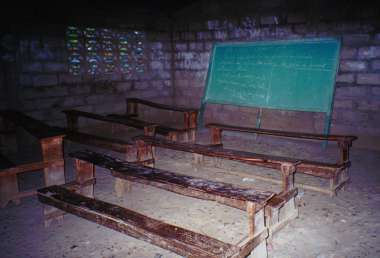| Home | Everyday Life | Land and Agriculture | Transportation | The Hope | Resources |
 |
Everyday Life
 |
As with other groups that we met with, it was a pleasure to see a mixture of men, women, and children participating in the introductions and listening to what we had to say, and sharing their experiences. At our six meetings, 5-15% of the attendees were women, and the number of children was probably 15-40%. This is important I believe because the more breadth of contact that we can have in a community, the more likelihood that there will be an "institutional" memory and awareness, which may carry over to new generations.
As for division of labor by gender, the vast majority of farm transportation is done by women in some cases accompanied by small children. They walk the long dusty roads which are made more dusty by the occasional passing of trucks. In the fields I saw more men working than women. Regarding domestic activities such as cooking I saw only women involved, except I understand that men are involved in the slaughtering of goats.
Because we spent so much of our time on the road and in meeting with large groups of people, I did not have much opportunity to get into the actual fields and interview farmers on location doing farming. Therefore these observations are fairly shallow and I hope in a future trip to learn more about the social fabric as it related to farm production and resource conservation.
 |
Most communications are by radio, not television. As new forms of global communication reach remote areas of Haiti, there could be more replacement of local traditions of art and dance and traditional story telling with mass marketed approaches. Since it's inevitable that global technology will reach Northwest Haiti, I would like see it come in as noninvasive a way as possible.
Since the rural people appear to be very proud of their environmental and cultural heritage, even to the point of objecting to the otherwise beneficial Neem tree, I believe there will be some resistance to inappropriate technology, but it may not be enough resistance. Therefore, I envision a potential for artists and dance instructors and sociologists working with local Haitian students of Haitian culture to help document the existing richness of the culture.
The Disappearance of 9 Million People
As a footnote, when I went to Barnes and Noble bookstore the next day after my return to the US, I discovered that Haiti, a country of some 9 million people, has disappeared from all major travel books, including Fodor's Caribbean 2000, "The King of Guidebooks;" The National Geographic Traveler The Caribbean, and Frommer's 2000 Caribbean.
Bartholomew's map shows every other country of the Caribbean except Cuba and Haiti, which are missing. There were two travel books, including the Lonely Planet series, that made brief mention of Haiti. A few pages.